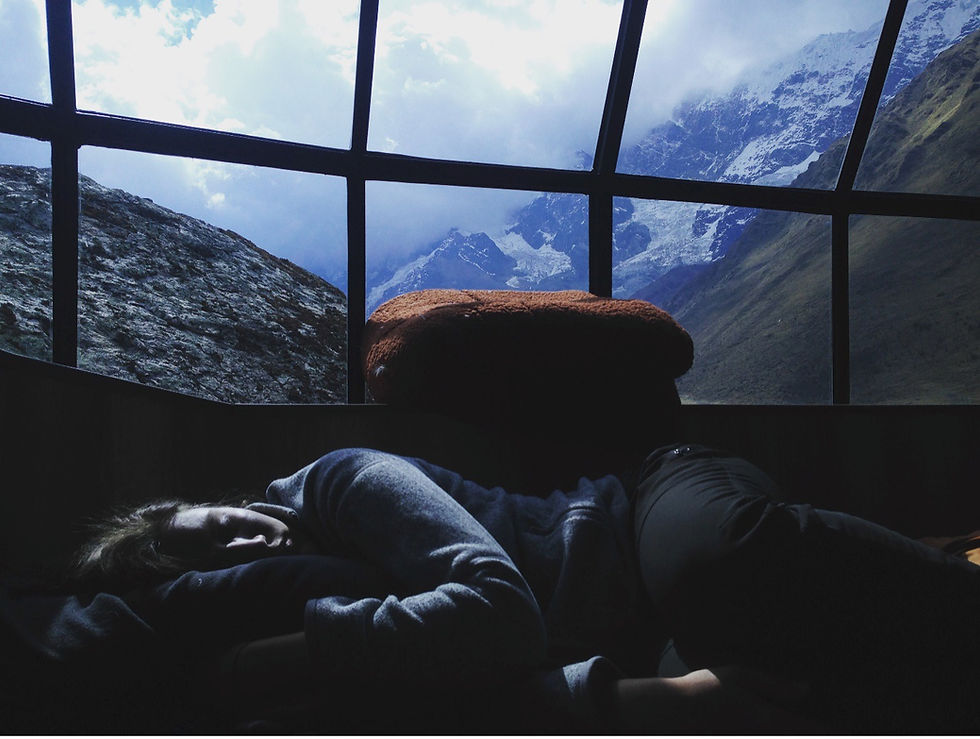Fall Back: Adjusting to the End of Daylight Saving Time
- Jo Soria

- Nov 6, 2023
- 3 min read
It's that time of year when we set the clocks back an hour, lose some sunlight at the end of the day, and possibly experience some general fatigue over the next few days or even weeks (nope, you're not just imagining it). Check out #TRN's top tips to ease that transition and fall back into a healthy routine as smoothly as possible.

The Daylight-Saving Time Debate
Love it or hate it, we can't avoid that semi-annual time shift. At the top of November, we "fall back," allowing for an extra hour of cozy sleep on the morning of the transition. On the other hand, many of us will also be more likely to drive home in the dark at the end of a long workday or feel drowsy and unproductive earlier in the evenings.
Initially implemented as a method to save on wartime energy costs and improve the U.S. transportation system, legal and health experts are left debating whether Daylight saving time is an outdated ritual that does more harm than good.
Health and Wellness Concerns
You can find Harvard Medical School, John Hopkins School of Public Health, and the American Academy of Sleep Medicine among the high-powered population of health officials who've called for a more critical look at the detrimental effects of twice-annual time changes, even if we're only talking about a one hour shift.
And suppose you're one of the 63% of Americans who support eliminating seasonal time changes. In that case, it's become a waiting game to see if the Sunshine Protection Act or similar bills can eventually gain traction within Congress.
Top Tips for the Time Change
As for now, it looks like we'll be dealing with the seasonal shift of Daylight saving time whether we like it or not. So what can we do to ease the autumn change for ourselves?
Prioritize Sleep Hygiene
Never underestimate the importance of sleep or the value of healthy sleep habits. Not only is sleep critical for our regular physical and mental health, but it can also help us through stressful changes or periods of dysregulation. By crafting a relaxing and distraction-free sleep synching routine, we can fortify ourselves against seasonal stressors like shorter days, sickness, and holiday stress.

Find Ways to Get Some Sun
If you're used to catching some sun during an early evening walk or workout, look for ways to maintain regular exposure to natural light. Whether you switch to morning walks or take a quick outdoor stretch during your lunch break, a good daily dose of sunlight can help keep your circadian rhythm in check.
Keep Your Focus
Due to the extra hour of sleep, you may feel more refreshed when you wake up in the morning but find that your energy wanes earlier in the day. Be sure to pace your meal and caffeine intake appropriately and consider building a daily routine to maintain your workday focus. You can incorporate regular movement and stretch breaks, incorporate some breathwork, or take that quick outdoor walk.
Take Care of Health and Housekeeping Tasks
While we're working on our healthy personal routines, we might as well get some minor administrative tasks out of the way as well. Fire departments often recommend making a habit of changing out smoke detector batteries when Daylight saving time begins and ends since it's easier to remember that way.
It might also be an excellent time to check that any outdoor motion sensor lights are in good working order if you'll be coming home after dark more often, or you could explore using smart bulbs that you can activate remotely when needed. If you plan to walk or work out in the dark, make sure you have reflective safety gear and, if necessary, flashlights, bike lights, or any items you may need for personal defense.
Next Stop: Holidays
For many, the autumn time change unofficially marks the transition into the hustle and bustle of the holiday season. If you find yourself feeling like it's non-stop 'til New Year's from here, make sure that you still take time to prioritize yourself and your health. By taking small, intentional steps now, we can position ourselves not just to survive the end of the ear but to truly enjoy it.
Don't miss out on the latest wellness word-of-mouth topics from #TRN. Subscribe to Trusted Referral Network today.
.png)



Comments